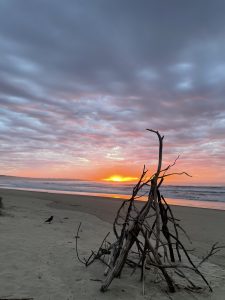
Sharing stories with children
Reading aloud to children was one of my greatest joys as a teacher, a parent and now as a grandparent. So much occurs between you
Let’s look at what the documents that underpin our practice say. Obviously, you have to think about keeping children safe; there are standards … but our documents actually support children acquiring skills through risk taking.
The EYLF (2009) tells us that outdoor learning spaces should invite risk taking, and MTOP (2011) encourages children to take appropriate and considered risks. The Guide to the National Quality Framework (2020) advises that instead of trying to eliminate all risks from the environment, we need to understand that risky play is acceptable where the benefit to children’s learning outweighs the risk. The Guide further suggests that Educators can manage a risk/benefit approach by completing risk assessments and considering the responsibility and the benefit of providing a safe, stimulating play environment for all children.
Look at risk-taking for children with fresh eyes and ask yourself does the benefit outweigh the risk? Consider the language you use and the provisions you provide. Sometimes we react as Educators and purely focus on the perceived safety aspects. But do you know that research tells us otherwise.
Staempfli (2009) found that children who experience fewer restrictions in their play engage with environments and equipment that are more diverse and challenging, yet the rate of accidents and injuries is lower. Whilst Sandseter (2009) discovered that injuries more commonly occur due to children’s behaviour and rash decisions and improper use of equipment.
Want to critically reflect more and deeper on this? Well we can help you. We have a section called ‘Risk? What Risk?’ in our journal ‘Pause and Ponder. Reflecting on our work with children.’ Register your interest in our journal today https://earlyyearseducationspecialists.com.au/pause-ponder-coming-soon/
References:
ACECQA (Australian Children’s Education & Care Quality Authority) (2020). Guide to the National Quality Framework.
DEEWR (Australian Government Department of Education, Employment and Workplace Relations) (2009). Belonging, being & becoming: The Early Years Learning Framework for Australia. Commonwealth of Australia.
DEEWR (Australian Government Department of Education, Employment and Workplace Relations) (2011). My time, our place: Framework for school age care in Australia. Commonwealth of Australia.
Sandseter, E. B. H. (2009). Characteristics of risky play. Journal of Adventure Education and Outdoor Learning, 9(1), 3-21. DOI: 10.1080/14729670802702762
Staempfli, M. B. (2009). Reintroducing adventure into children’s outdoor play environments. Environment and Behavior, 41(2), 268-280. DOI:10.1177/0013916508315000
SHARE THIS POST:

Reading aloud to children was one of my greatest joys as a teacher, a parent and now as a grandparent. So much occurs between you

One thing I noticed during lockdown was the joyous sounds around my neighbourhood of children, of all ages, creating and playing with natural materials found